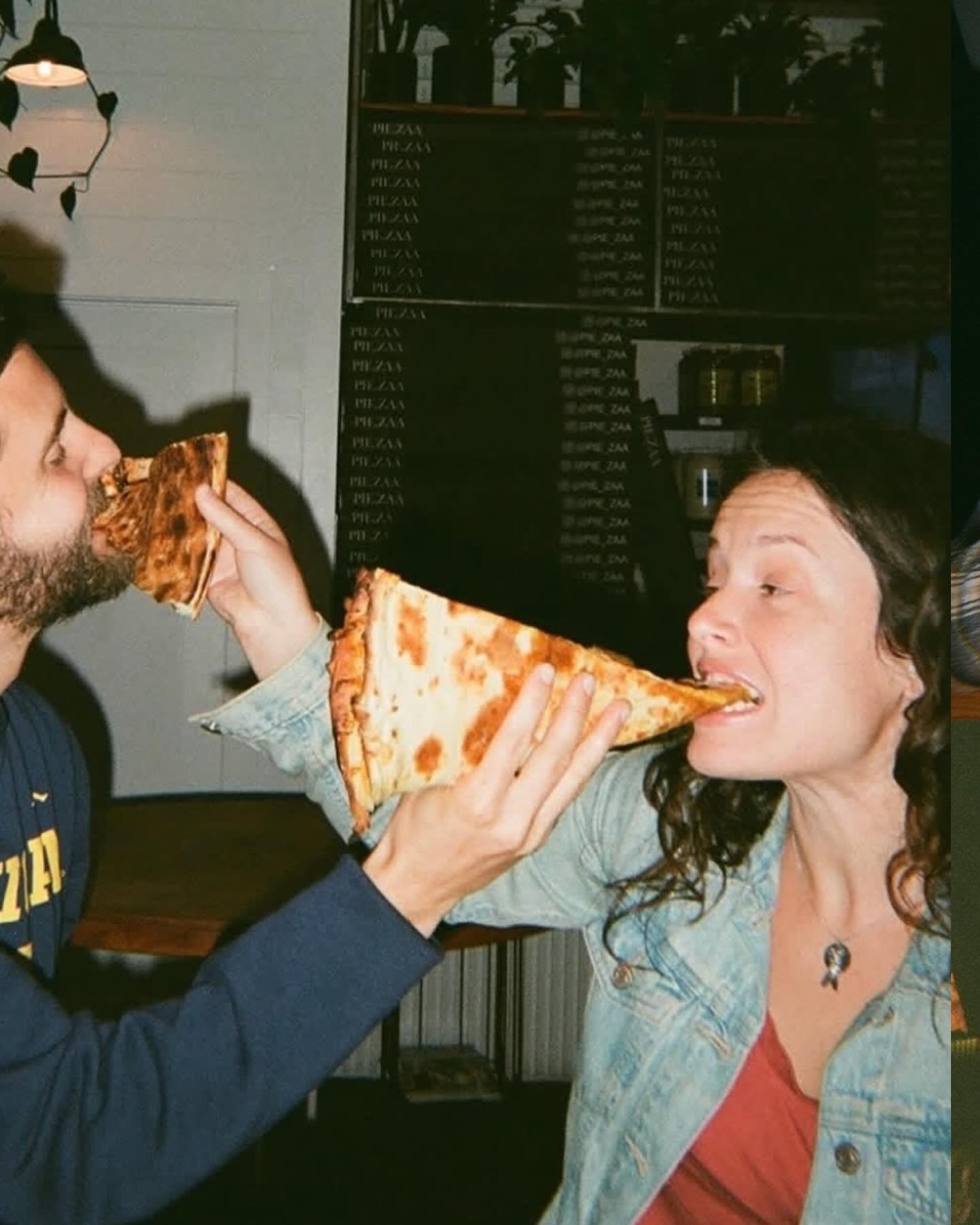
ASHEVILLE
Slice by Slice, Asheville is Coming Back: How a Pizza Shop Owner Is Helping Rebuild a City
Written by Tyler Kotch | June 28, 2025
Growing up in Butler, Pennsylvania, was exactly what you’d picture—gray skies, back roads, cows in every direction. It’s a small town about an hour north of Pittsburgh. Back in the day, it was known for being the birthplace of Jeep. Me and my best friend used to sneak out at night and run around the old industrial buildings. That was our entertainment.
Butler was a pizza town. Nearly every road had its own little shop, and somehow they all survived. It wasn’t about hype—it was about care. Everyone made their dough fresh. Everyone used good ingredients. Everyone showed up every day and did the work. That’s how you lasted.
Now I own a pizza shop in Asheville. PIE.ZAA started with a single oven and a New York–style slice model designed for brewers and bar hoppers down in South Slope. But lately, it’s become something more—a platform, weirdly enough, to help rebuild the story of this city. Because Asheville, like those old pizza joints in Butler, isn’t going to make it on buzz alone. It takes people who care. Who keep showing up. That’s what we’re trying to do here—not just in my shop, but all across town.
Tyler Kotch
Before PIE.ZAA, I worked nearly 10 years in the medical field. I was in surgical suites for trauma and laparoscopic cases and then moved into consulting for Johnson & Johnson. I lived everywhere—North Carolina, Tennessee, California, New York City. Eventually I landed back in Asheville with J&J.
Late nights leaving the O.R., I kept running into the same problem: I was starving, and there was nowhere to get good food. Asheville had a great restaurant scene, but nothing stayed open after 9:30. I’d be out with friends and think, “How does a town this fun not have a decent slice after dark?”
That idea stuck. I didn’t have restaurant experience. I didn’t know how to make pizza. But I knew I could figure it out. I watched YouTube tutorials, read every dough recipe I could find, and started renting out Owl Bakery’s kitchen late at night to practice. It was humbling. I burned a lot of dough. Finally, the owner introduced me to Sam Grossman, a baker who had just moved to town. Sam helped me get the recipes dialed in—dough, sauce, our signature ZIP drizzle, house-made ranch. That was the foundation.
Six years later, the recipes have evolved. The dough is sweeter. The sauce is less acidic. We’ve leveled up our ingredients and built strong relationships with local vendors. I’ve worked hard to keep prices low—a single slice is still under seven bucks—because I want people to feel full and satisfied without breaking the bank. You can feed five to seven adults with a whole pie. That’s value.
We’ve got a niche, and I’ve stayed committed to it. We’re the late-night spot, the brewery lunch crowd, the slice on your way home. And our customer base has grown to include families, regulars, tourists, everyone. What we’re doing works.
What hasn’t worked, though, is the story people are seeing about Asheville. Since the hurricane, there’s been this weird narrative online that the town’s in shambles. Outdated videos keep circulating—flooding, closed storefronts—and it gives people the impression we’re still in crisis. That’s just not true. We’re open. We’re thriving. But the longer that false image sticks around, the more it hurts us.
Tourism is the lifeblood here. If people stay away, the whole city feels it. And with the way rent and costs are rising, some restaurants won’t survive another slow season.
“Since the hurricane, there’s been this weird narrative online that the town’s in shambles.“
That’s why I teamed up with Performance Food Group, our food distributor, to launch a marketing campaign. I met with nine of their executives, and we started mapping out a strategy: influencer outreach, social content, video reels, anything we can do to get the real Asheville out into the world. I may run a tiny pizza shop, but with their help, I can get a much bigger message across.
We also started a monthly sticker release series featuring local artists. Every month, each PIE.ZAA location will drop a batch of 25 limited-edition stickers designed by Asheville artists who were hit hard by the storm. First 25 people who ask for one with their slice get it for free. We’re also doing reels with each artist, linking to their socials and websites, to help amplify their work.
Because that’s what this city runs on—collaboration. Other towns might treat business like a zero-sum game. Not here. The South Slope district is even working to become a social district, where people can responsibly carry drinks from place to place. That’s unheard of in most places. But here, it makes sense. We all want to see each other succeed.
I think about the day after the storm. No power, no water, trees down everywhere. And people were out there, helping neighbors, clearing streets, lifting each other up. Nobody was waiting around for someone else to fix it. We did it ourselves.
That’s Asheville. Not the clickbait version, not the doom-scroll headlines. The real version, where people care. Where they keep showing up.
And that’s what we’ll keep doing—again and again, slice by slice.












